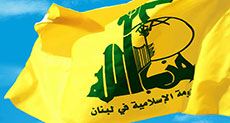
DIARY OF RESISTANCE OPERATIONS – MARCH 1998

The following are the Islamic-Resistance operations that took place during the month of March in 1998
Islamic Resistance Performs 105 Operations in March, 1998, Lebanese Brigades Commence Operations
In March, the resistance squadrons performed 114 operations against the occupation forces and the Lahd militiamen. 105 operations among those were performed by the Islamic Resistance.
The operations resulted in 9 casualties among the "Israeli" soldiers and wounded 2 Lahd militiamen, the enemy acknowledged.
Besides, the explosion of a bomb on March 31, 1998 killed 6 and wounded 1 on the way to Markaba Site. No side declared responsibility for the blast, and different reports were made on the casualties. Some reports said the men were Lahd agents who had just finished mounding Markaba Site; whereas other reports mentioned the men where farmers.
On the other hand, 3 Islamic-Resistance fighters were martyred this month.
Furthermore, "al-Manar Television" specified a web page for news on the Islamic-Resistance's acts. This step in reality was made to develop the psychological war on the occupation. The page included Arabic and English articles, including the Islamic-Resistance's news, Hizbullah's stances, and selected Arabic texts translated into English. The texts included the speeches of Hizbullah Secretary General His Eminence Sayyed Hassan Nasrallah, Islamic-Resistance statements, martyrs' pictures, and the significant operations of the Islamic Resistance.
The web link was: http://www.almanar.com.lb
Also, on March 31, 1998, a vehicle on its way back from Kawkaba Hill was blasted. Six Lahd militiamen were killed and another was wounded while on their way back after they had finished the fortification works at Kawkaba Site. The blast occurred approximately 75 meters away from the observation post of the Norwegian unit corresponding to the UNIFIL (United Nations Interim Forces in Lebanon), which lay in the west side of Kawkaba Town.
The Lahd-Militia command reprimanded the Norwegian unit, accusing it of delaying the rescue works.
Fearing other explosive bombs might be there, the occupation forces and the Lahd militiamen didn't dare evacuate the casualties, which remained in the blast zone over an hour and a half, reported eye witnesses.
Obviously, the "Israeli" helicopters landed down away from the blast zone, and an ambulance transported the casualties along an 8-km distance to Marjeeyoun, where the helicopters had been waiting. While the helicopters were transporting two severely wounded militiamen to Ram Bam Hospital in Haifa, one of them died.
The Islamic-Resistance sources confirmed the Resistance was not responsible for the incident, certain security sources expected the occupation forces might have been responsible for it; the blast occurred near the UNIFIL observation post. Five years earlier, the enemy had forcibly made the route where the blast occurred (inside the work zone of the Norwegian forces). The route was meant to substitute the main one leading to Kawkaba Site, which the occupation forces had made in Souk el-Khan hub in 1985, and which was exposed to the Islamic-Resistance operations.
Lebanese Brigades Commence Operations, March 14, 1998
Marking the 20th anniversary of the "Israeli" incursion into Lebanon, "the Lebanese Brigades for Resisting the "Israeli" Occupation" commenced their operations on March 14, 1998. Having performed 3 operations against the occupation forces, "the Lebanese Brigades" issued the following statement: "We've wished to act before making any statement... And we've chosen this day in particular to confirm that neither the international law nor resolutions deter the enemy from their aggressions. But power does... We, therefore, declare launching "the Lebanese Brigades for Resisting the "Israeli" Occupation". The "Lebanese Brigades" have begun their jihad after several months of preparation and habilitation. The "Lebanese Brigades" reflect different Lebanese sectors trust in the resistance choice."
"The Lebanese Brigades'" statement as well declared their groups attacked the Zionist sites of Braachit, Haddatha, and as-Suweidaa. Using their machine guns and rocket shells, the fighters brought about casualties to several site fortifications and emplacements of heavy machine guns. The fighters caused casualties to many site garrisons, too.
Resistance Bombards Radar (al-Bayyada) Site, March 20, 1998
On March 20, 1998, the Islamic-Resistance fighters monitored Zionist soldiers marshaled at the Radar (al-Bayyada) Site. The fighters bombarded them at once. Later that day, the Resistance fighters bombarded other Zionist soldiers marshaled at Blat Site, causing them serious casualties.
Six "Israeli" soldiers were wounded as the Resistance bombarded the Radar Site. Three soldiers were transported to hospitals in occupied Palestine; whereas the others were treated in South Lebanon, acknowledged a spokesman of the "Israeli" military.
Lebanese Brigades Strike Sites of Beit Yahoun, al-Qantara, March 24, 1998
In the morning of March 24, 1998, the fighters of "the Lebanese Brigades for Resisting the "Israeli" Occupation" attacked Beit Yahoun Site, damaging its mounds and fortifications. Five minutes later, another group of "the Lebanese Brigades" attacked al-Qantara Site, causing it serious casualties.
Source: moqawama.org
Comments

DIARY OF RESISTANCE OPERATIONS -DECEMBER 199
12 years ago
DIARY OF RESISTANCE OPERATIONS -November 1998
12 years ago
